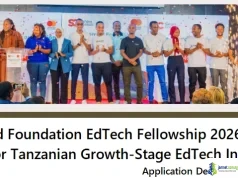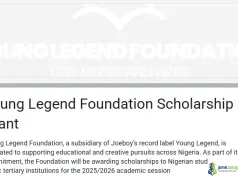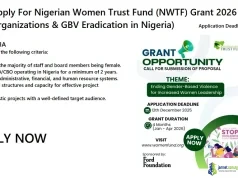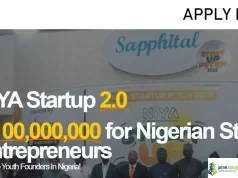Applications are now open for the Thoma Foundation Conservation Grant 2026 focused on South American viceregal art Research


The Carl and Marilynn Thoma Foundation Grant extends crucial financial support to restorers and conservators, museums, and academic institutions dedicated to safeguarding South American viceregal art. This targeted conservation grant represents a strategic, fiscal intervention intended to advance conservation projects and research initiatives within this specialized domain. By providing up to in nonrepayable capital, the program empowers expert teams to address preservation challenges without financial constraint. This detailed guide provides the necessary strategic framework for securing this prestigious award.
Scholarship Overview Summary
The Carl and Marilynn Thoma Foundation Grant is a nonrepayable grant allocated by the Thoma Foundation to highlevel conservation professionals and institutions. The funding is strictly designated to support conservation projects and research initiatives focused on the unique heritage of South American viceregal art.
This conservation grant aligns with two core qualifications:
- Specific Focus: The award is bestowed to advance preservation, conservation, and research strictly within the field of viceregal art from the Spanish Americas.
- Institutional Support: The funding targets established entities such as museums, academic institutions, and conservation teams, not individual degree seeking students.
| Program Summary | Details |
|---|---|
| Host Institution | Carl and Marilynn Thoma Foundation |
| Location | Global (Focus on South American viceregal art) |
| Category | Conservation Grant $\text{\hspace{1mm}} |
| Eligible Countries | All Nationalities (International applicants, especially Latin America, are encouraged) |
| Reward | Up to in Financial Support (distributed among multiple projects) |
| Duration | One to two years |
| Application Deadline | 15 December 2025 |
Grasping this core distinction is the initial, mandatory step in formulating a focused and highly effective application strategy.
Advantages of Receiving Carl and Marilynn Thoma Foundation Grant
Securing the Carl and Marilynn Thoma Foundation Grant provides essential capital and academic validation crucial for global preservation efforts. The resulting benefits profoundly affect the longevity of cultural heritage and the professional development of the project team’s longterm financial trajectory.
The conservation grant offers the following primary advantages
- Funding Capital: The award provides up to in financial support for dedicated conservation projects. This targeted fiscal aid ensures the eradication of barriers to completing essential restoration and preservation work, promoting superior research initiatives and preventing reliance on external debt obligations.
- Validation Recognition: Being selected by an international jury of experts provides powerful external endorsement of the project’s significance. This establishes an impressive resume credential for future collaboration and funding, positioning the project director as an expert in viceregal art preservation.
- Research Development: The grant facilitates the assembly of specialized interdisciplinary team composed of conservators, scientists, and art historians. This collaboration directly contributes to advancing specific theories, practices, and knowledge in the area of South American viceregal art through clear dissemination of results channels.
Essential Eligibility Criteria
The Carl and Marilynn Thoma Foundation Grant is awarded through a competitive selection process favoring projects with high impact and clear methodology. To maximize your success, you must diligently review the requisites and tailor your submission to emphasize your qualifications in the following critical areas.
1. Project Personnel and Institutional Status
The applicant must confirm their professional capacity and the viability of their supporting environment.
- Eligible Applicants: The grant is intended for restorers and conservators, museums, and academic institutions funding projects.
- Interdisciplinary Team Requirement: Projects must involve a conservation professional either working individually or leading an interdisciplinary team composed of art historians, scientists, museum staff, and other relevant experts.
- International Encouragement: International applicants, particularly those operating in Latin America conservation, are strongly encouraged to submit proposals, aligning with the Foundation’s global reach.
2. Demonstrated Research Focus and Impact
The application is only valid if the proposed work centers on the specified art period.
- Core Focus: Projects must be exclusively related to the preservation and conservation of South American viceregal art and its heritage.
- Project Scope: The research initiatives may be in various stages of development, from initial planning to advanced implementation, but must demonstrate significant potential to contribute to the field.
- Methodology Requirement: The project proposal must detail the preservation or conservation challenge addressed, the anticipated outcomes, and the specific methodology to be employed.
3. Dissemination and Duration
The Foundation expects a clear plan for the knowledge transfer generated by the grant.
- Project Duration: Grants are awarded for a term of one to two years, demanding a detailed work plan timeline.
- Results Dissemination: At the conclusion of the term, the project director must select appropriate channels to clearly disseminate the research results.
- Evaluation Section: The proposal must include a dedicated section on project evaluation, highlighting how the outcomes would advance specific theories, practices, or knowledge in the area of viceregal art.
Application Process (Step by Step Guide)
Securing the Carl and Marilynn Thomas Foundation Grant requires meticulous attention to detail regarding both content and formatting limitations. Diligently following this detailed application process step by step will dramatically elevate your success rate.
Step 1: Execute Focused, Granular Research
The application preparation focuses on detailed financial and academic planning.
- Abstract: Prepare a detailed 300word abstract providing a concise summary of the entire conservation grant project, along with a definitive project title and period of performance.
- Proposal Document: Develop a comprehensive project proposal spanning seven doublespaced pages, with up to two optional pages for images, charts, or diagrams.
- Detailed Budget: Submit a comprehensive detailed budget with explicit justification for all anticipated expenditures.
Step 2: Structure the Research Proposal
The main proposal document must follow a strict internal structure for review by the international jury of experts.
- Sections: The proposal must be organized under the following mandatory sections: significance for art of the Spanish Americas and methodology, preservation conservation research impact, evaluation, curriculum vitae of the project director and key personnel, work plan timeline, and detailed budget with justification.
- Content Focus: The proposal must describe the challenge addressed and highlight connections to previous efforts in the field.
- Personnel CV: Include the curriculum vitae (CV) for the project director and all key personnel.
Step 3: Finalize and Submit the Application
A complete and accurate file is essential for a winning submission.
- Complete Form: Ensure the complete application form is filled out, providing all project director information.
- Dissemination Plan: Clearly articulate the plans for dissemination of results to the relevant academic and conservation communities.
- Submission: The final application must be submitted by the absolute application deadline for consideration.
Application Deadline
The conservation grant application deadline date is absolute and unforgiving.
The final and most critical date for submission is 15 December 2025. Missing this stated deadline by a single day invariably results in a lost financial support opportunity for this vital fund.
You must establish a detailed organizational infrastructure and be fully cognizant of the key dates:
- Official Due Date: 15 December 2025
- Notification: Decisions will be formally communicated in March 2026.
- Project Start Date: The official grant start date is 1 April 2026.
Starting your application preparation process early is paramount. A proactive and systematic approach to managing your application deadline will minimize stress and fundamentally guarantee the quality of your submissions.
CLICK HERE TO LEARN MORE
Frequently Asked Questions (FAQs) About Thoma Foundation Grant
It is understandable to have many questions regarding how to secure the financial aid necessary for your education. We have addressed some of the most common and critical queries to bring further clarity to the process of obtaining this prestigious conservation grant.
Q1: What is the primary focus of the Carl and Marilynn Thoma Foundation Grant?
The grant’s core mission is to promote and support conservation projects and research initiatives specifically focused on South American viceregal art and its heritage.
Q2: What is the maximum funding amount available through this grant?
The Foundation awards and distributes up to annually among several projects selected by an international jury of experts. This is the total pool, not the amount for a single project.
Q3: Who is eligible to serve as the project director or lead a team?
The grant is intended for professional restorers and conservators, museums, and academic institutions funding projects. The project must be led by a qualified conservation professional.
Q4: Are international applicants, especially those from Latin America, encouraged to apply?
Yes. International applicants, particularly those operating in Latin America conservation, are strongly encouraged to submit proposals to advance local expertise and preservation efforts.
Q5: What is the maximum length for the project proposal narrative?
The project proposal is strictly limited to seven doublespaced pages for the narrative, with an allowance for up to two optional pages for supporting images, charts, or diagrams.
Q6: Can the grant funding be used for general institutional operating costs?
No. The grant is specifically designed to support defined conservation projects and research initiatives, meaning the detailed budget must directly justify costs related to the preservation and conservation work itself.
Q7: What are the primary elements that must be included in the project proposal?
The proposal must include sections on the project’s significance, methodology, preservation conservation research impact, evaluation, CVs of key personnel, work plan timeline, and detailed budget with justification.
Q8: What is the required length for the project abstract?
The project abstract, which summarizes the core goal of the conservation grant project, is strictly limited to 300 words.
Q9: When will applicants receive notification of the funding decision?
Applicants will be formally notified of the international jury of experts’ decision regarding the conservation grant funding in March 2026.
Q10: What is the expected outcome regarding the results of the funded research?
The grant recipient is expected to select appropriate channels for the timely and effective dissemination of results of their research initiatives at the conclusion of the project term (one to two years).













